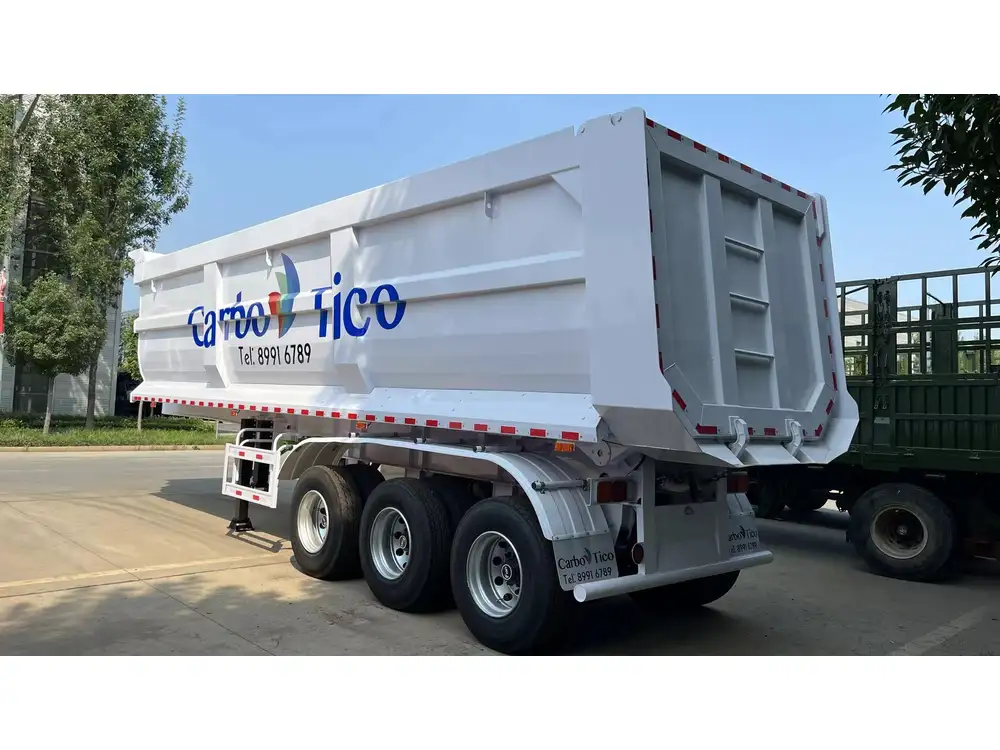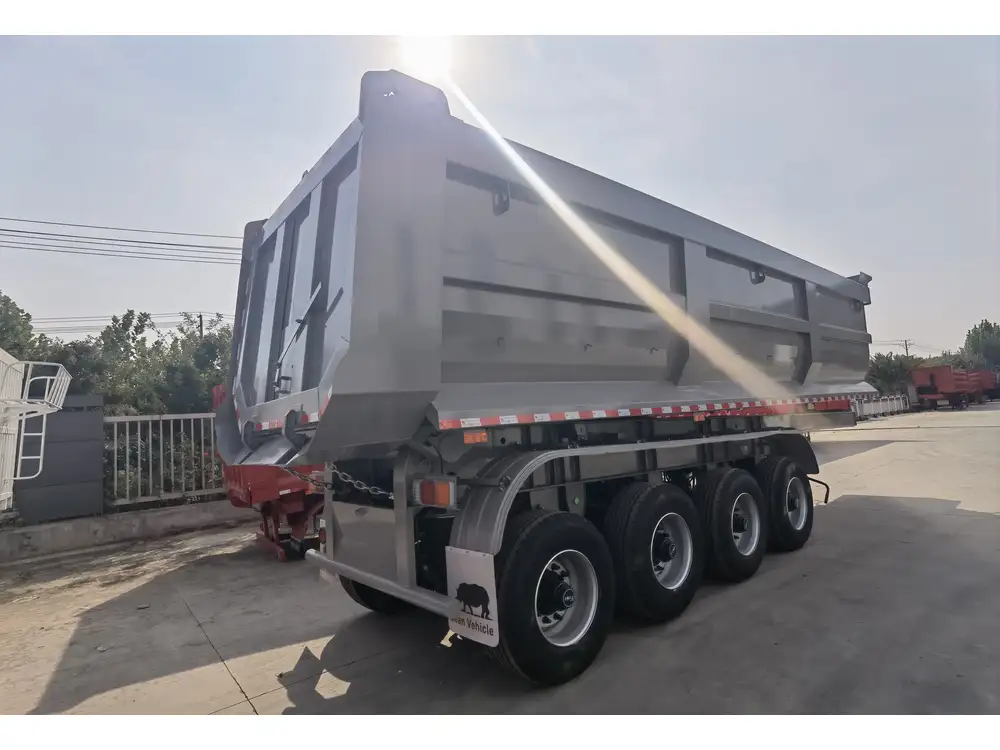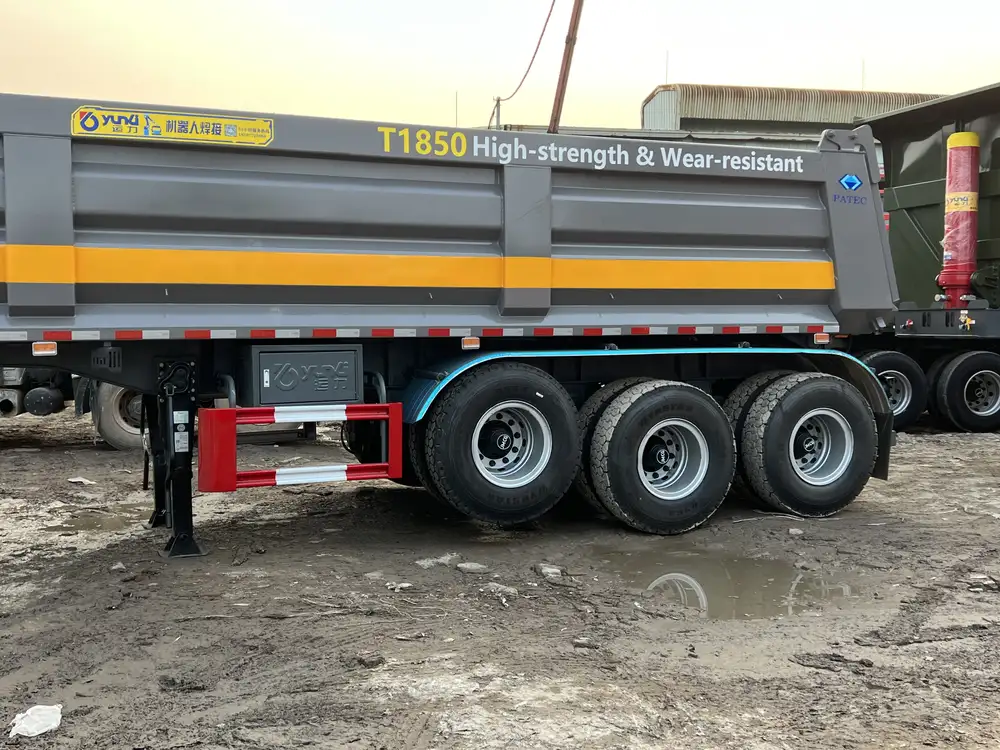When navigating the vast highways of logistics and transportation, understanding the dimensions of your vehicles becomes critical. One of the most pressing questions for fleet managers, logistics coordinators, and truck drivers alike is, “How long is a semi with a trailer?” This question is vital for planning, compliance, and ensuring the safety of both cargo and personnel.
Standard Dimensions of Semi-Trailers
1. Overview of Semi-Trailer Types
The first step to accurately answering this question is understanding the various types of semi-trailers available in the market:
| Type of Semi-Trailer | Typical Length |
|---|---|
| Flatbed | 48 to 53 feet |
| Dry Van | 48 to 53 feet |
| Reefer | 48 to 53 feet |
| Tanker | 48 to 53 feet |
| Step Deck | 48 to 53 feet |
| Lowboy | 35 to 53 feet |

2. Total Length of a Semi with Trailer
The total length of a semi-truck combined with its trailer varies significantly based on the configuration chosen. Federal regulations stipulate that the maximum overall length for most semi-trailer combinations is generally 70 to 80 feet in the United States. Here’s a breakdown of typical configurations:
- Standard 53-foot Trailer: Combined length with a semi-truck typically around 70 to 75 feet.
- 48-foot Trailer: Combined length usually measures about 65 to 70 feet.
- Tandem Axle Configuration: The semi-truck and trailer may reach up to 80 feet when incorporating twin 48-foot trailers, often seen in specialized transport scenarios.
3. Importance of Knowing Dimensions
Knowing the length of your semi-trailer combination is crucial for several reasons:
- Weight Regulations: Different states have specific weight limits based on vehicle dimensions.
- Route Planning: Certain routes may have restrictions that impact whether your longer combination can safely traverse.
- Docking and Parking: Ensuring you have sufficient space at distribution centers and loading docks.
Factors Influencing Total Length

1. Truck Cab Variations
The type of truck cab (also known as the tractor) significantly impacts the total length. Here are common configurations:
| Truck Cab Type | Typical Length |
|---|---|
| Day Cab | 10 to 12 feet |
| Sleeper Cab | 12 to 15 feet |
2. Trailer Type and Lengths
As previously indicated, the type of trailer you choose also determines the overall length:
- Flatbed Trailers: Generally have fixed lengths of between 48 to 53 feet, suitable for a variety of cargo.
- Reefer Trailers: These refrigerated units also typically match the aforementioned lengths but add complexity due to their insulation and cooling systems.
3. Auxiliary Equipment
Various additional equipment can affect the overall length of the semi-trailer combination. These may include:
- Hitches and Couplings: Specific types can add extra length.
- Storage Boxes: Auxiliary toolboxes or storage compartments mounted to the frame contribute to the overall length.

4. Regulations and Compliance
Be aware that semi-trailer lengths are subject to both federal and state laws. In the U.S., most states adhere to federal regulations, which set the maximum length of a semi-trailer combination at 80 feet. However, specific regulations can vary:
- State-Specific Limits: Some states have unique requirements, with allowances for longer tractor-trailer configurations within specific contexts (e.g., double trailers).
Calculating Your Configuration
1. Identifying Your Needs
Before venturing into specific calculations, consider the nature of your transported goods:
- Volume Needs: What are the dimensions of your typical cargo?
- Weight Considerations: What is the maximum load your truck can handle?

2. Configuration Calculator Example
| Config Type | Truck Length | Trailer Length | Total Length |
|---|---|---|---|
| Standard (53′ trailer) | 12 feet | 53 feet | 65 feet |
| Double Trailer Set-Up | 12 feet | 48 feet + 48 feet | 108 feet (may not be legal in all states) |
3. Real-World Examples
Calculating the total length can often include real-world applications. Here are a couple of scenarios:
Scenario A: A logistic company shifts to a doubly loaded configuration, comprising two 48-foot trailers. The total length will be regulated and often necessitates special permits.
Scenario B: A transportation fleet focusing on standard cargo uses a single 53-foot trailer attached to a day cab, reaching approximately 66 to 70 feet in total length.
Compliance with State and Federal Regulations
Understanding the regulations governing semi-trailer lengths is paramount to successful logistics management. Here’s how you can ensure compliance:

1. Federal Standards
Under the Federal Motor Carrier Safety Administration (FMCSA), the maximum permissible length varies, typically capped at 53 feet for the trailer and 80 feet for the entire combination.
2. State Regulations
Many states have provisions allowing longer vehicles, particularly for specific types of cargo or across designated routes. Always verify with the local Department of Transportation.
3. Permits
For configurations exceeding standard lengths, permits are often required. These permits will account for:
- Route Analysis: Special routes that accommodate longer vehicles.
- Safety Regulation Compliance: Meeting safety standards during travel.

Implications for Fleet Management
Aligning your semi-trailer lengths with operational requirements is crucial for effective fleet management. Here are several considerations:
1. Load Optimization
Utilizing the correct trailer length can lead to significant operational savings. Proper loading techniques can prevent overloading and ensure compliance with legal frameworks.
2. Cost Management
From fuel efficiency to tire wear, the length of your trailer will affect various operational costs. A trailer that is too long may decrease fuel efficiency due to added drag, leading to higher expenditure.

3. Training and Awareness
Educating your drivers and fleet managers regarding the dimensions and regulations of semi-trailers can enhance safety and compliance:
- Training Programs: Implementing regular training to educate drivers about trailer management.
- Up-to-Date Resources: Offering resources on changing regulations helps in compliance.
Conclusion
In the world of logistics and freight transportation, understanding the length of semi-trailers is not merely a matter of curiosity; it is essential for optimizing operations, ensuring safety, and remaining compliant with state and federal regulations.
Whether you’re looking to expand your fleet or streamline your existing operations, mastering this knowledge provides a solid foundation. This article serves as a detailed reference to assist you in making informed decisions regarding your semi-trailer configurations and overall fleet management strategy. Being deeply acquainted with the intricacies of semi-trailer dimensions will empower businesses to navigate the complexities of transportation logistics with greater ease.



